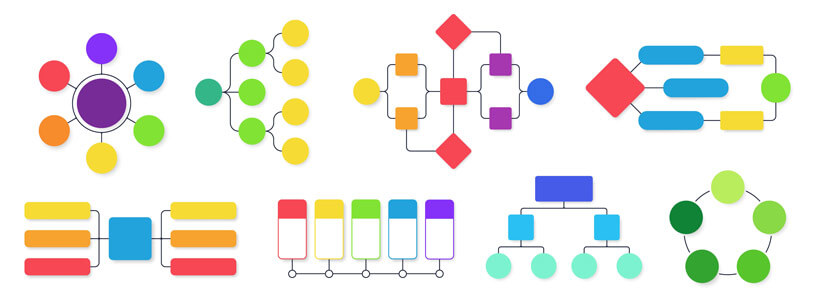If your business is growing and you want to hire employees, it’s important to spend time creating a recruitment and selection process.
- How a business mentor can help you grow your business
- How do I advertise my small business?
- How to write a marketing plan for your business
- What type of business insurance do I need?
It should help to make hiring consistent, efficient, and effective. You could even draw a recruitment process flowchart to help map out the different stages.
Why do you need a recruitment and selection process?
When growing a business, you might initially hire employees without a specific process in place. This can work if you aren’t always advertising roles, instead hiring people based on personal recommendations.
But eventually, you’ll probably want a large pool of candidates to choose from. This is where advertising open positions comes in, as well as a proper recruitment and selection process.
What are the recruitment process steps?
There are four stages, according to the Chartered Institute of Personnel and Development (CIPD):
- define the role
- open it to applicants
- manage applications and the selection process
- hire someone
Recruitment process: define the role
Defining the role is about getting clear on the position you want to fill and the type of person you want to hire.
It involves research, as well as a fair amount of writing. You should ask:
- what will the person be responsible for?
- what will the person be doing day-to-day?
- what team will the person be in (and who will be their manager)?
- where does the role sit in the team and business’s structure?
To answer these, you can speak to the person who’s in the role currently about their responsibilities.
If it’s a completely new position, write down all the reasons the business now needs someone in the role.
From there, you can come up with a job description and a person specification.
The job description should give a clear indication of duties, responsibilities, and the role’s objectives. Be sure to avoid jargon, using a tone of voice that matches your brand (and one that doesn’t put applicants off from applying). Read more about writing a job description.
The person specification should give an idea of the type of person you’re looking for. This might include experience, qualifications, and behaviours.
To encourage lots of applications from a diverse range of people, it’s important to not make this too restrictive. Stick to the ‘must-haves’ that someone needs to do the job. You might choose to frame anything else as a ‘nice-to-have’.
And be sure to take care with the language you use. Using words like ‘outspoken’ or ‘assertive’ implies a narrow set of traits, which may put people off applying.
Next, you can advertise the role.
Recruitment process: open it to applicants
A job advert should include the job description and person specification, as well as practical details about the role (like location, type of contract, salary, and application deadline).
You should also include details about your business. What’s its history, culture, and values?
When your advert’s ready, you can post it to your own website, as well as job boards like:
Keep in mind that online job boards aren’t the only way to advertise a role. You can also look to your local community, for example schools, colleges, and universities, as well as job centres.
It’s also worthwhile to create a process for existing employees to recommend people they know, perhaps with an incentive (like a cash bonus if the person they refer is eventually hired).
You can also advertise the role internally, encouraging career changes and progression.
Finally, remember that there are dedicated recruitment agencies that you can use to fill roles. Recruitment agencies charge fees and commission. So if you go down this route, make sure to research and choose one that suits your business.
Recruitment process: manage applications and the selection process
How will people apply for the role? It could be as simple as asking for a CV and cover letter, or you could create a tailored application form.
But keep in mind that the application process should be simple and not too time-consuming.
It’s also important to keep the application process inclusive. Many application forms ask candidates whether they need any adjustments. For example, those who are hard of hearing will have different needs when it comes to communication.
There are protections for applicants under the 2010 Equality Act, so keep on top of the legalities. You can also download our equal opportunities template.
A standardised process is vital for when applications start coming in. Be sure to:
- acknowledge applications promptly
- keep applications confidential (only the relevant stakeholders need to read them – you have GDPR and data protection responsibilities when it comes to applications, too)
- tell the candidate whether they’re progressing (or not) in good time – applicants often have multiple options lined up, so if you’re slow, you might miss your chance to hire them
Selecting candidates and the next stages
When you’ve got a number of applications, balance their merits against the job description and person specification to come up with a shortlist of candidates.
Once you’ve shortlisted a candidate, they usually have to go through a few stages before getting an offer. These might include:
- an initial screening (like a phone or video call)
- an interview with the hiring manager (the person who has an open position in their team)
- an interview with other team members (perhaps who they’ll be working with regularly, or someone more senior – it’s not uncommon for CEOs of small businesses to interview)
- a task or test to assess their skillset
When creating your recruitment and selection process, there are tried-and-tested methods for assessing candidates that you can use, keeping them reliable and fair. The CIPD has more on this.
Recruitment process: hire somone
When you’ve chosen a candidate, it’s time to make an offer. You should also tell the other remaining applicants that they’ve been unsuccessful (giving feedback, if requested).
At this stage, you need to stay on the right side of the law. Keep in mind that you should:
- do pre-employment checks to make sure that the candidate has the right to work in the UK
- give legally required information in the contracts of employment
- make sure you’re not discriminating under the 2010 Equality Act
- apply rules around referencing consistently (but there’s no detailed legislation designed for references)
Remember that a verbal offer to a candidate is as legally binding as a written offer.
Employment law is complex. The Advisory, Conciliation and Arbitration Service (ACAS) has lots of legal information and tips for hiring processes.
Gov.uk also has more on what you need to do when employing staff for the first time.
When your new employee joins your business
A thorough onboarding and induction process can give your new employee a great impression of your business before they start working for you.
Why not take a look at our guides about keeping employees happy at work?
- how to reward and retain employees
- how to recognise employees
- what employee benefits should you offer?
Documenting the recruitment and selection process
Documenting the different stages of the recruitment process will help keep it consistent across your business.
Make sure you write down all the steps it takes to get to an offer. How many interviews will a candidate need to go through? How long do interviews last?
If one team carries out just one hour-long interview before making an offer, while another team wants three half-hour long ones, there’s a clear lack of fairness.
Once you’ve written the steps down and developed a recruitment policy, send the documents out to the rest of the business.
Create a recruitment process flowchart
An easy way for everyone in your business to visualise the recruitment process is by using a recruitment process flowchart. This will show who’s responsible for each stage, as well as how a candidate progresses.
A flowchart is the ideal diagram, because different things can happen at each stage. For example, if one candidate gets rejected, a flowchart makes it easy to see which stage the process needs to revert back to.
Because they’re different processes, you might choose to have one flowchart for all the stages up until making an offer, and then another flowchart for the steps after the offer’s made.

Examples of flowcharts. Credit: Tartila/stock.adobe.com
How have you got on with developing a recruitment and selection process? Let us know in the comments below.
Are you protecting your business?
As one of the UK’s biggest business insurance providers, we know how important it is to protect your livelihood in case something goes wrong. Why not take a look now and build a quick, tailored business insurance quote?
Monkey Business/stock.adobe.com
Monkey Business/stock.adobe.com
